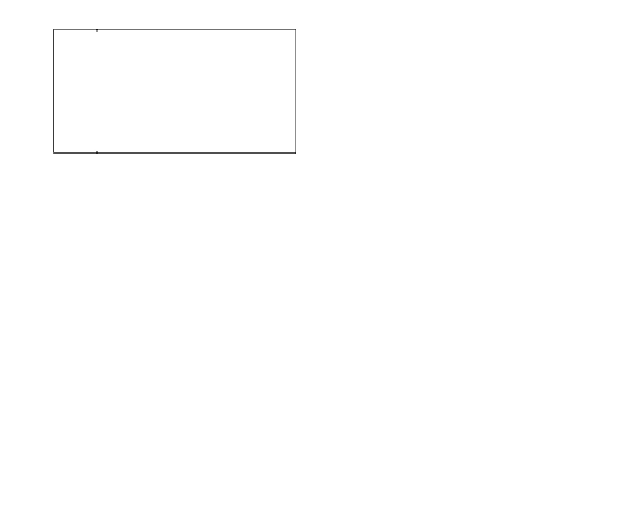Environmental Engineering Reference
In-Depth Information
Controlled Variables
Control Variables
55
800
50
600
45
400
40
35
200
30
200
300
400
200
300
400
4000
30
3500
20
3000
2500
10
2000
1500
0
200
300
400
200
300
400
51
50.5
60
50
40
49.5
49
20
200
300
400
200
300
400
Time (min)
Time (min)
Figure 5.11
Controlled variables. (a) Product size (%). (b) Circulating load (ton/h). (c) Sump box
level (%). Control variables. (d) Rod mill feedrate. (e) Water to sump box. (f) Speed pump
Under this formulation, the sump box level is used to decouple inlet disturbances
from the sump box towards the hydrocyclones. The proposed control strategy main-
tains the speed pump at its maximum operating value, considering the number of
hydrocylones and ball mill capacity. This fixes the volumetric flow
Q
towards the
hydrocyclones, so that
d
54
is governed solely by the percentage of solids in the
inlet to the hydrocyclones, which can be regulated through the fresh ore feedrate
and with water addition to the sump box level, considering volumetric flow balance
around the sump box. This formulation is particularly useful for rougher flotation
stages which are extremely sensitive to particle size distribution .
The strategy is first tested without considering constraints in the fresh ore fee-
drate. Figure 5.13 shows the controlled and control variables, respectively. It can be
seen from Figure 5.13 that the speed pump reaches its constraint level at 60% and
remains there until 300 min, when an increase of the constraint occurs. During this
time, the fresh ore feedrate is maximized and the the sump box level is maintained
close to its maximum restriction at 80%. Therefore, circulating load is indirectly
maximized, maintaining a desired product fineness, which means lower energy con-
sumption. At 230 minutes, a change in the index function is made, increasing the
weight parameters of the feedrate. Figure 5.13 shows that the fresh ore feedrate is
increased until product fineness reaches its lower constraints and the sump box level
remains close to its highest constraint.
(
c
)

























































Search WWH ::

Custom Search